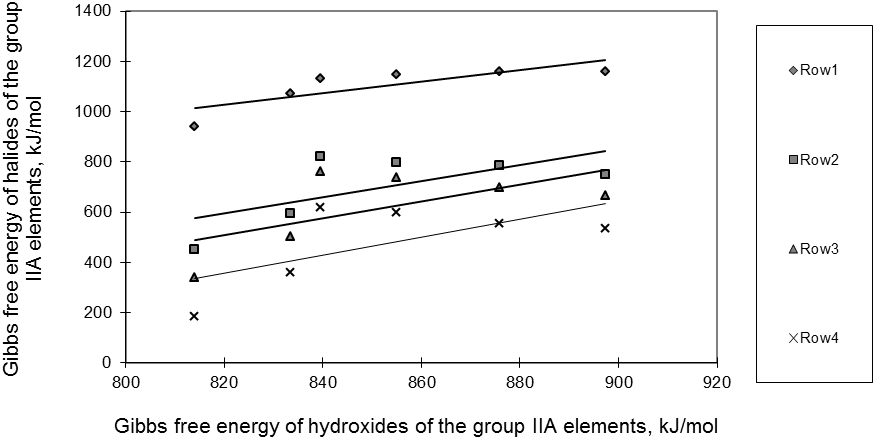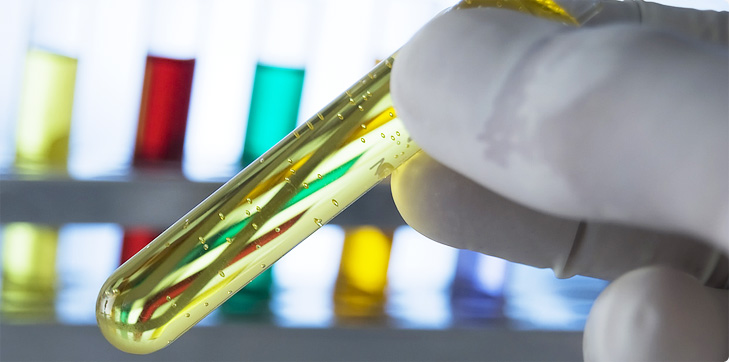About Us
Executive Editor:Publishing house "Academy of Natural History"
Editorial Board:
Asgarov S. (Azerbaijan), Alakbarov M. (Azerbaijan), Aliev Z. (Azerbaijan), Babayev N. (Uzbekistan), Chiladze G. (Georgia), Datskovsky I. (Israel), Garbuz I. (Moldova), Gleizer S. (Germany), Ershina A. (Kazakhstan), Kobzev D. (Switzerland), Kohl O. (Germany), Ktshanyan M. (Armenia), Lande D. (Ukraine), Ledvanov M. (Russia), Makats V. (Ukraine), Miletic L. (Serbia), Moskovkin V. (Ukraine), Murzagaliyeva A. (Kazakhstan), Novikov A. (Ukraine), Rahimov R. (Uzbekistan), Romanchuk A. (Ukraine), Shamshiev B. (Kyrgyzstan), Usheva M. (Bulgaria), Vasileva M. (Bulgar).
An array of various techniques is presently known to be applied to determine physicochemical properties. These techniques serve to find correlation dependencies between the rows of similar compounds [1, 2]. However many of the existing techniques do not allow to establish mathematical relationship with regard to physicochemical properties in subgroups of the periodic system. They also need a huge array of properties in order to determine a single one.
This paper summarizes the results of an investigation into the relationship between a range of properties [3-5] - formation enthalpy, Gibbs free energy, entropy, specific heat; enthalpy and entropy of transition from one phase to another (melting, evaporation); crystal lattice energy, melting temperature and density - and the charges of atomic nucleuses of the periodic system group IIA elements, as well as the number of energy levels. Halides (chlorides, fluorides, iodides, and bromides) and hydroxides have been selected as singly charged anions. The analysis involved the plotting in various reference frames, and subsequent analytic description by means of Windows-compatible software packages Table Curve 2.03® produced by Jandle scientificTM and Microsoft Excel.
The relationships on coordinates F=f(Z), F=f(n), where F is a selected physicochemical property, Z is an atomic number (nucleus charge) of an element, and n is a period number (energy levels number) are shown as broken curves, but the applied software allowed for steadily varying smooth curve.
As the nucleus charge of a cation increases in compounds Me2+(ОH)2- and Me2+(Hal)2 , both formation enthalpy and Gibbs free energy reduce, while entropy grows. Besides, ΔН 0 298,15 and ΔG0 298,15 , and S 0 298,15 have been noticeably increased, with a halide transiting from one period to another (from fluorine to iodine). The situation with hydroxides is somewhat different. In this case the values of formation enthalpy and Gibbs free energy increase from beryllium hydroxide to calcium hydroxide, and, naturally, decrease from calcium hydroxide to radium hydroxide. Hence, the plotting for these compounds differs in terms of its graphical view. Apparently, beryllium hydroxide and magnesium hydroxide differ from other elements of the row. These relationships are evidently curvilinear. Therefore, the authors suggest that a specific property - a value of property which refers to a nucleus charge unit - should be used in order to smooth data.
Linear relationships can be obtained if plotted on logarithmic coordinates ln(F) = f[ln(Z)], ln(F/Z) = f[ln(Z)], ln(F) = f[ln(n)], ln(F/Z) = f[ln(n)]. The analysis of logarithmic correlation dependencies has revealed that nearly every line exhibited a kink for calcium compound. Therefore taking into account a certain difference of the first two elements of beryllium and magnesium from other elements of the principle subgroup of the group II we could cut off the logarithmic data on compounds of beryllium and magnesium, and plot dependencies for other compounds of the row (calcium, strontium, barium, and radium). It has been observed that the correlation coefficient increases at that, whereas the value of relative deviation reduces.
The abovementioned can be used as a ground for a logarithmic rule according to which logarithmic values of a property (specific property) are linearly correlated with logarithmic values of the element´s nuclear charges (number of a period).
The derived analytical expressions served to predict the selected properties with regards to compounds of an element bearing the atomic number 120 (E-Ra). The correlations good in terms of prediction have been selected with regard to high correlation coefficient and following the calculation of root-mean-square deviations based on least square technique [6, 7]. The Table 1 shows the analytical expressions recommended for prediction of thermodynamic properties of hydroxides of the group IIA elements with singly charged anions, with deviations indicated for every point of correlation. Similar equations have been derived for calculation of other properties of halides but they are absent from the diagram.
Correlations between various properties as well as between the halides of the group IIA elements should be plotted in order to evaluate the data obtained. The paper suggests a number of correlations - between formation enthalpy and the sum of the first two electron binding energies (ionization energies), as one of principle energy characteristics of elements; between formation enthalpy and crystal lattice energy; between formation enthalpy and standard electrode potential; between crystal lattice energy and standard electrode potential; between crystal lattice energy and the sum of the first two electron binding energies (ionization energies); between thermodynamic characteristics in the row of halides; between thermodynamic characteristics of chlorides and other halides of the group IIA elements (see Fig. 1).
Prediction analytical expressions have been derived for every correlation. These have been selected in a similar manner - on the basis of maximum correlation coefficient
Table 1. Analytical expressions adequate to determine thermodynamic values of hydroxides and halides of the periodic system group IIA elements
|
Dependence |
Equation |
MeHal2 Ме(ОН)2
|
Absolute Deviation, Δ |
Relative Error, δ% |
|
ln(-ΔН0 298,15 )=f[ln(n)], for Ca(OH)2, Sr(OH)2, Ba(OH)2, Ra(OH)2 |
ln(-ΔН0 298,15 )=7,1 -0,1[ln(n)] |
Ca(OH)2 Sr(OH)2 Ba(OH)2 Ra(OH)2 |
-1,4 2,9 -0,9 -0,4 |
-0,2 0,3 -0,1 -0,04 |
|
ln(-ΔG0 298,15 )=f[ln(n)], for Ca(OH)2, Sr(OH)2, Ba(OH)2, Ra(OH)2 |
ln(-ΔG0 298,15 )=6,967-0,119 [ln(n)] |
Ca(OH)2 Sr(OH)2 Ba(OH)2 Ra(OH)2 |
-0,522 1,112 0,046 -0,063 |
-0,058 0,127 0,005 -0,008 |
|
ln(S )=f[ln(n)], for Ca(OH)2, Sr(OH)2, Ba(OH)2, Ra(OH)2 |
ln(S0 298,15 )=3,55+0,63[ln(n)] |
Ca(OH)2 Sr(OH)2 Ba(OH)2 Ra(OH)2 |
0,46 -1,67 2,07 -0,79 |
0,55 -1,79 1,90 -0,68 |
Note: logarithmic equation should be exponentiated, while an equation for specific property should be multiplied by a corresponding nucleus charge in order to determine the property required.

Figure 1. Gibbs free energy correlation between hydroxides and halides of the group IIA elements
Row 1 - fluorides, row 2 - chlorides, row 3 - bromides, row 4 - iodides
and minimum root-mean-square deviation. On the whole, all correlation dependencies are linear. They can be described by the equation y=a+bx, where у and х - properties, a and b - coefficients in equations (Table 2).
The correlations analysis demonstrated maximum deviations for halides and hydroxides of beryllium and magnesium. Hence, more accurate correlations for prediction of selected compounds of E-Ra could be obtained by dividing those correlations
Table 2. Coefficients of correlation dependencies between properties of chlorides of the group IIA elements
|
Dependence |
а |
b |
R2 |
|
-ΔН0298,15=f(ΣЕi1+Еi2) |
1291,696 |
-0,292 |
0,9714 |
|
-ΔН0298,15=f(-φ0) |
-176,459 |
346,982 |
0,9721 |
|
-ΔН0298,15=f(Еlatt) |
1630,555 |
-0 ,386 |
0,9810 |
|
Еlatt=f(-φ0) |
4224,723 |
-726,707 |
0,8593 |
|
Еlatt=f(∑Еi1+Еi2) |
1070,308 |
0,657 |
0,9907 |
|
-ΔН0298,15=f(-ΔG0298,15) |
-47,184 |
0,999 |
0,9999 |
|
-ΔН0298,15=f(S0298,15) |
46,448 |
6,509 |
0,9233 |
|
-ΔG0298,15=f(S0298,15) |
-1,373 |
6,507 |
0,9247 |
into two blocks. Among other things, the division leads to increased correlation coefficients and reduced root-mean-square deviations.
Similar dependencies - with plotted prediction data for halides and hydroxides of an element bearing the atomic number 120 - served to confirm the accuracy of results. Furthermore, correlation coefficients have remained sufficiently high, root-mean-square deviations have not increased, while coefficients of correlation equations have remained almost unchanged.
The Table 3 shows prediction data for fluoride of E-Ra (#120) as well as missing data for radium compounds. The data with regards to the same properties of chlorides, bromides, iodides and hydroxides of radium and E-Ra have been obtained in the course of investigation. However, they are not included into the diagram.
Table 3. Physicochemical properties prediction data
|
Condition |
Element |
Value of condition |
|
|
Fluorides |
|
|
-ΔН 0298,15 |
E-Ra (№120) |
1170,63 kJ/mol |
|
-ΔG 0298,15 |
E-Ra (№120) |
1131,542 kJ/mol |
|
S 0298,15 |
E-Ra (№120) |
121,778 J/mol*К |
|
ΔНmelt |
Ra (№88) E-Ra (№120) |
16,09 kJ/mol 13,11 kJ/mol |
|
ΔSmelt |
Ra (№88) E-Ra (№120) |
9,22 J/mol*К 7,39 J/mol*К |
|
ΔНevap |
Ra (№88) E-Ra (№120) |
281 kJ/mol 263 kJ/mol |
|
Ср |
E-Ra (№120) |
72,53 J/mol*К |
|
Еlatt |
Be (№4) Ra (№88) E-Ra (№120) |
3262,49 Joul 2218,39 Joul 2132,28 Joul |
REFERENCES
- B.V. Nekrasov, "Fundamentals of general chemistry," 3rd edition, Moscow, Khimiya, vol. 1, p. 656, 1973.
- M.Kh. Karapetyantz, "Comparative calculation of physicochemical properties," Moscow, Nauka, p. 403, 1965.
- J. Emsly, "The elements," Moscow, Mir, p. 256, transl. from English, 1993.
- R. Ripan, I. Chetyanu, "Inorganic chemistry," Moscow, Mir, vol. 1, p. 560, 1971.
- Reference guide "Thermal constants of agents," Ed. by V.P. Glushko, USSR Acad. Sci., issue IX, p. 573, 1979.
- A.N. Zaidel, "Errors of physical quantities measurements," Moscow, Nauka, p.108, 1974.
- A.K. Charykov, "Mathematical treatment of chemical analysis results," Leningrad, Khimiya, p. 168, 1984.
S. Parfyonova, I. Garkushin, N. Katz, V. Zhivaeva and I. Dorovskikh THE ANALYSIS OF PHYSICOCHEMICAL PROPERTIES OF COMPOUNDS OF THE PERIODIC SYSTEM GROUP IIA ELEMENTS WITH SINGLY CHARGED ANIONS. International Journal Of Applied And Fundamental Research. – 2010. – № 4 –
URL: www.science-sd.com/386-23447 (03.10.2025).











 PDF
PDF